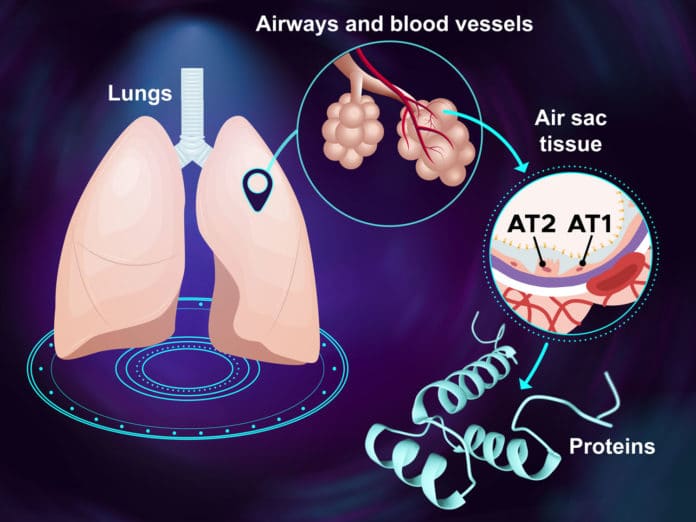A new study by scientists at the Department of Energy’s Pacific Northwest National Laboratory could offer a detailed analysis of human lung development and its function. Scientists created the most comprehensive road map of the protein composition of human lungs. This roadmap provides a window to the healthy development of the lung that made terrestrial life possible.
PNNL research scientist Geremy Clair, the study’s lead author, said, “We examined proteins in early stages of lung development, and we looked at how they are changing during the development of the organ. The idea was to learn things about development that we have not seen with previous biomedical studies. Those studies—mostly derived from animals—painted part of the picture, but the data we have generated provide insights on previously unknown details.”
The lung comprises over 40 types of cells, including epithelium cells, interstitial connective tissue, blood vessels, hematopoietic and lymphoid tissue, and the pleura. The proteins are the engines powering the bulk of their cellular processes.
Analysis of the protein composition and molecular maturation in pulmonary tissue from nearly 50 donors- from birth to 8 years, revealed 8,938 proteins.
It is well known that the immune system develops throughout our lives. But, scientists found that the immune system in the lungs continues to develop for years after birth. The extent of change in the lungs in childhood surprised scientists.
The study also showed more precisely when to expect further stages of development.
Scientists noted, “It’s a welcome phenomenon because the lungs are one of the main gateways for pathogens to enter the body throughout our lifetime.”
Dr. Gloria Pryhuber, a study co-author and professor of pediatrics and environmental medicine at the University of Rochester Medical Center in New York, said, “The take-home message is that this is a first-of-its-kind analysis of how the protein building blocks of the lung change as a child grows from birth to mid-childhood. This study provides a reference map for future investigators to work on certain subsets of the changing proteins, whether they be enzymes or structural proteins.”
Clair said, “The lung is not completely developed when a baby is born. There is a little sac at the end of the airways—the major passages of the lungs—that has to divide into grape shapes called alveoli. Our study helps us better understand how this process works. Sometimes that development does not take place as expected. Our findings will help provide answers for that unfortunate circumstance, too.”
“Medical professionals will be able to use the protein map to help diagnose a variety of lung ailments as well as assess lung malfunction and disease in adults.”
“This study will be a resource in understanding developmental biology. It has relevance for lung transplants, for cystic fibrosis in children, for pulmonary fibrosis, as well as for idiopathic fibrosis.”
Pryhuber said, “The study will have practical benefits for patient care. But that won’t happen overnight. Much work remains to be done. Now that it is known that these nearly 9,000 proteins are there and change with age, some may be studied as biomarkers of health or disease and others as potential targets for therapies.”
As scientists noted, the study could have significant implications in understanding lung development. It could guide physicians about strategies to help premature infants and lead to new ways to explore tissue regeneration in adults.
The study is also expected to play a vital role in COVID treatment.
Clair said, “Ultimately, the lung protein data could provide some of the pieces to create artificial lungs.”
“Right now, there is a shortage of donor’s lungs for people who need transplants. We need to find ways to regenerate lungs or potentially make new lungs from cells of existing lungs. Technology today is much better than it was 20 years ago. We may have better technology 20 years from now. This study is part of the data that may make this possible.”
The study was conducted through the LungMAP project.
Journal Reference:
- Geremy Clair et al. Proteomic Analysis of Human Lung Development. DOI: 10.1164/rccm.202008-3303OC
